

Max Davies
2025 Toyota GR Supra Track Edition review
5 Days Ago
The Mini Cooper S is still adorable and fun to drive, but it's very expensive and lacks some modern features expected for the money.
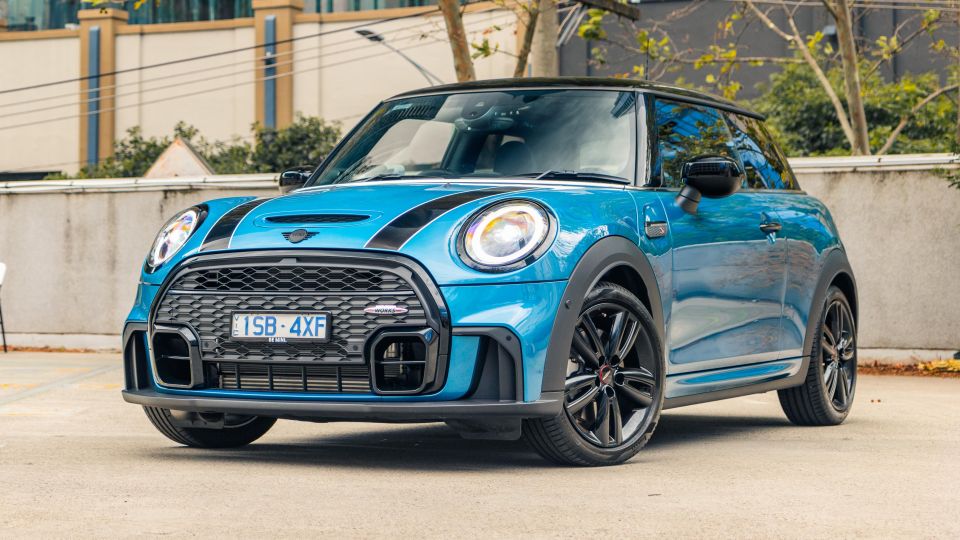


Marketplace Editor
New from
$37,500
excl. on-roads

Marketplace Editor
New from
$37,500
excl. on-roads


Marketplace Editor
New from
$37,500
excl. on-roads

Marketplace Editor
New from
$37,500
excl. on-roads
Quickly see how this car stacks up against its competition. Select any benchmark to see more details.
Where expert car reviews meet expert car buying – CarExpert gives you trusted advice, personalised service and real savings on your next new car.
The Mini is an automotive icon. It’s up there with the likes of the Porsche 911 and Volkswagen Beetle, the Land Rover Defender or even Mercedes-Benz G-Wagen.
Such names form an exclusive club that have managed to last decades without really messing with a winning formula. Evolution, not revolution, is the key here.
With that said, cars like the Mini have had to move with the times. In 2022 the Mini 3-Door Hatch has grown significantly to its historic equivalent, to the point where purists argue it’s not really a ‘Mini’ anymore.
But as people get larger, safety gets more important, and rivals continue to grow, it’s a sign of the times.

Here we have the 2022 Mini Cooper S 3-Door Hatch JCW Sport. Once you breathe again after such a long name, you can see and appreciate the retro styling cues and fun colour options of the modern Mini – such as this car’s bright Island Blue body paint with contrast Jet Black roof, stripes and mirror caps.
BMW-owned Mini pitches itself as a premium brand these days, a firm driven by design and fun factor rather than the humble ‘A to B’ principles the original was conceived from.
Priced from more than $50,000, the little turbocharged hatchback you see here is in a price bracket against established European hot hatches. They’re all faster, all larger, and in most cases all featuring more tech and safety.
Is there still a case for this retro-styled boutique buy? Or is it all style and no substance?
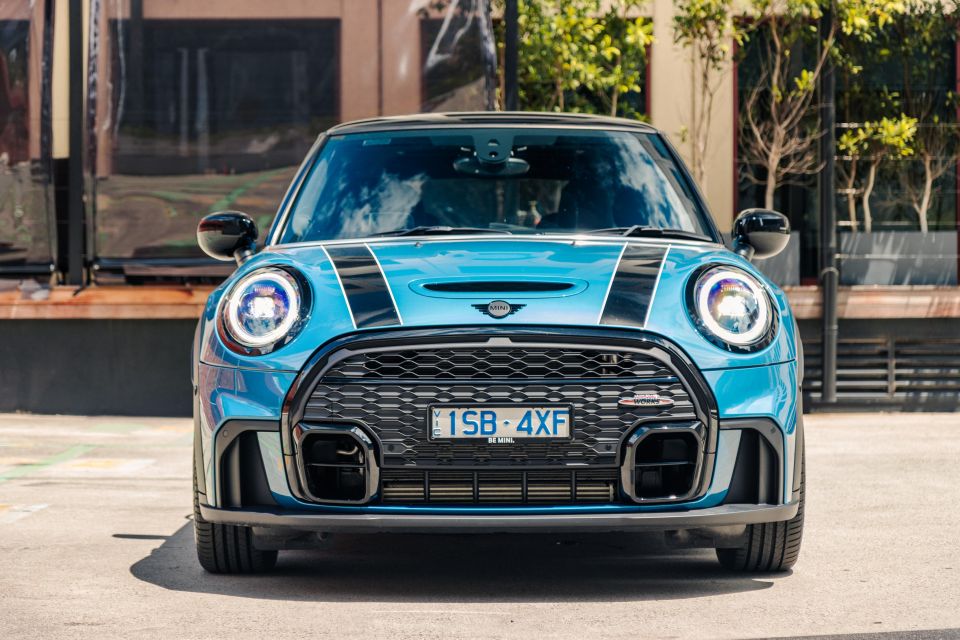
Mini Australia has changed the way it structures its range these days, offering distinct trim levels rather than a base car with a long list of options.
You can get into a Mini Cooper S 3-Door Hatch in base Classic form for $45,700 plus on-road costs, but this higher-spec JCW Sport version asks for a hefty $54,450 before on-road costs – or around $60,000 on the road. Jeez.
For an extra $400 you can get into the more powerful Mini Cooper JCW Essential, which combines the ‘pure’ base trim level with the more powerful JCW tune of the 2.0-litre four-pot turbo drivetrain. More show or more go? You decide.
All the colour and trim options come at no cost, so the black exterior accents are free of charge should you choose. For similar money, though, you could logically cross-shop with a number of larger, more powerful warm and hot hatches – though arguably none have the style and character of the Mini.

Key rivals include:
All prices exclude on-road costs

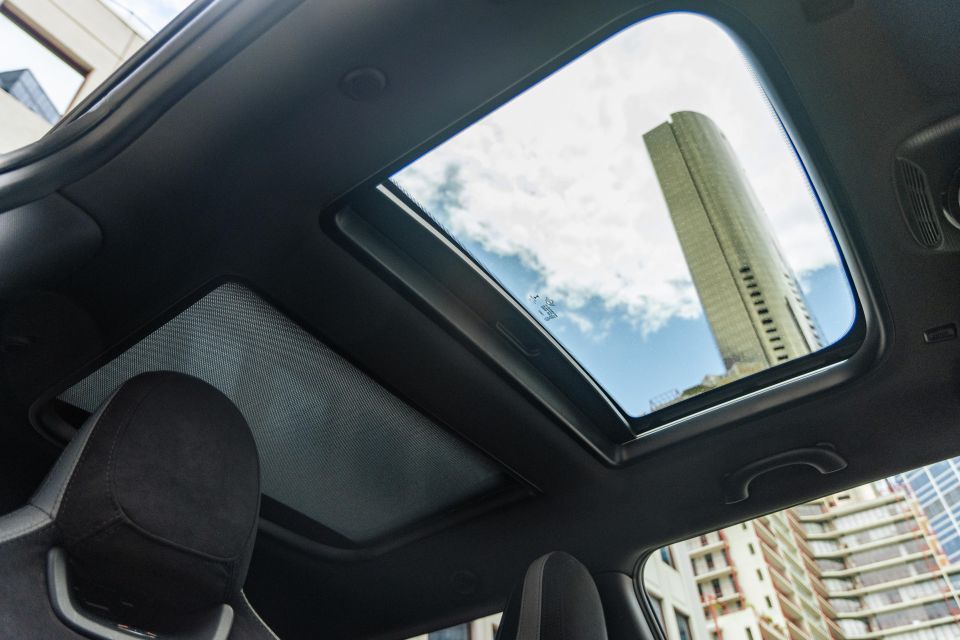


Buy your new car without the stress. It's fast, simple and completely free.

Great service from Travis and team, second time I have used this business would not hesitate to recommend them to anyone
Craig C.
Purchased a Ford Ranger in Sunshine Coast, QLD
CarExpert helped Craig save $7,224 on his Ford Ranger, now let us save you on your next new car.
Get your BEST priceMini Cooper S Hatch JCW Sport highlights:
That’s on top of features carried over from lower grades:

The Mini 3-Door Hatch has a four-star ANCAP safety rating based on testing conducted by Euro NCAP in 2014.
It received a frontal offset score of 14.60 out of 16, a side impact score of 12.19 out of 16, pedestrian and whiplash protection ratings of Good and Acceptable, respectively, and an overall score of 31.78 out of 37.
ANCAP reported (based on Euro NCAP testing) that the Mini 3-Door Hatch failed to meet the minimum threshold in the side impact test for a five-star rating, with driver chest and abdomen protection rated as Marginal.
All models come standard with:
Notable omissions include high-speed AEB, lane-keep assist and the option of blind-spot monitoring and rear cross-traffic alert, all features standard or at least available on similarly-priced rivals.

The Mini 3-Door Hatch hasn’t changed much inside over the course of its life, but the most recent update has brought about a couple of revisions.
A new steering wheel with touch-capacitive buttons joins a fresh infotainment surround with similar touch-based switchgear, which smooths out surfaces and looks good in photos, but perhaps falls a bit flat in practice.
Gloss black surfaces are a magnet for fingerprints and smudges, and the lack of physical buttons can mean inaccurate outputs to your inputs. Thankfully, the virtual buttons generally work as you expect, but within a day the steering wheel looked like it had been attacked by oily, sweaty fingers.
Despite its compact dimensions, the first row of the Mini is actually quite airy. The tall roof and range of adjustment in the JCW sports seats and steering wheel mean even a leggy adult like me can get comfortable, and all the controls fall within arm’s reach.

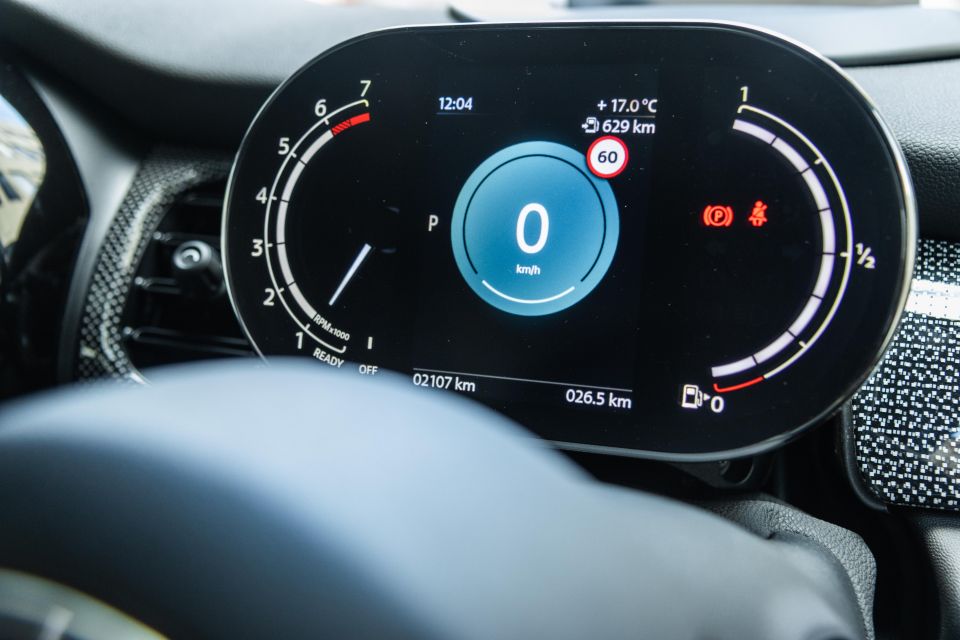


The central infotainment display is powered by a re-skinned version of BMW’s iDrive 6. While it may lack the newer look and feel of the new OS7.0 and iDrive 8 interfaces we’re seeing across the BMW line-up, the Mini looks contemporary and the processing power is snappy enough to keep it feeling current.
I enjoyed the 360W 12-speaker Harman Kardon premium sound system standard in the Mini Yours and JCW Sport versions of the Cooper S. Given the 3-Door Hatch is such a small car, that many speakers really turns it into a sound booth, and it’s nothing but a good thing given the crisp sound quality.
Storage isn’t bad for such a small car, but there are some points of praise and complaint.
The cupholders ahead of the shifter are quite small, though handy to have, and the little shelf behind it is a good place to store smaller items like keys or a wallet. There’s a deeper cubby under the front-centre armrest, and within said armrest there’s a cradle with a wireless smartphone charger, though it still can’t accommodate a larger phone.
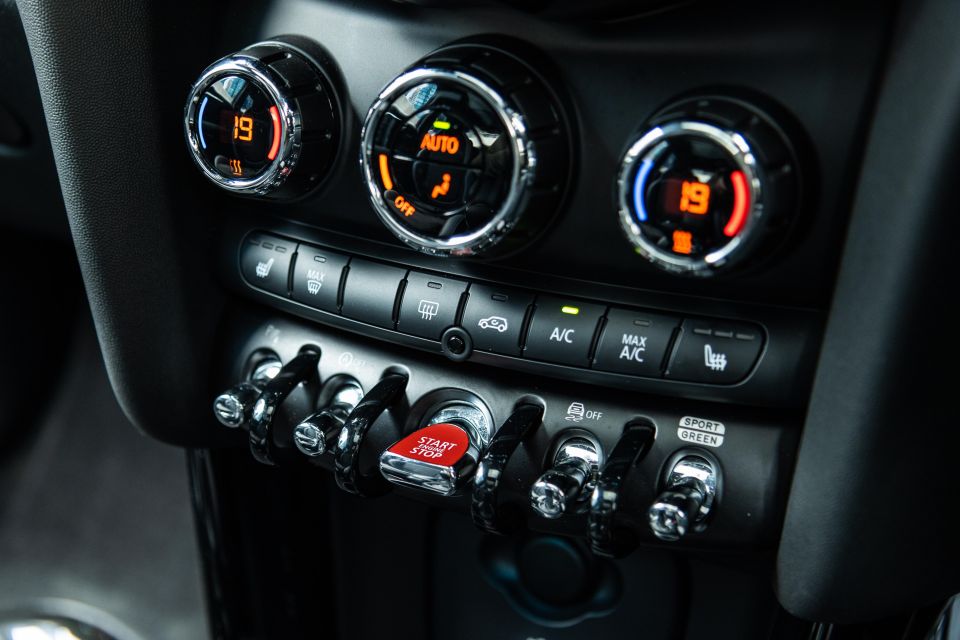
Material quality is up there with the best in the light car segment, though it doesn’t stand out quite as much compared to similarly-priced ‘small’ hot hatches from mainstream brands.
Mini has always been good at making its cabins feel quite expensive, and this latest model is no different. Not until you get to the lowest sections of the cabin do you find hard, scratchy plastics, and everything you touch or rest on looks and feels well-made.
Personal favourite elements include the toggle-like switches and starter. They look cool and feel solid in operation, plus they get people talking.
Speaking of the ambient lighting, you can adjust the colour to really change the vibe inside. It’s cool that it lights up that big circular ring in the centre of the dashboard, and the same ring lights up like a temperature dial when you adjust the climate control.
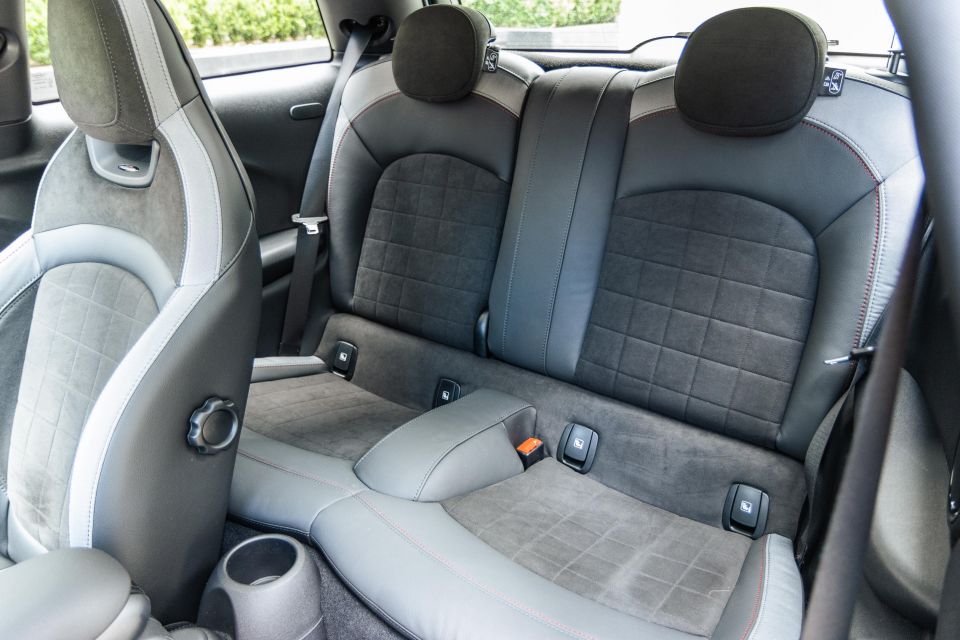
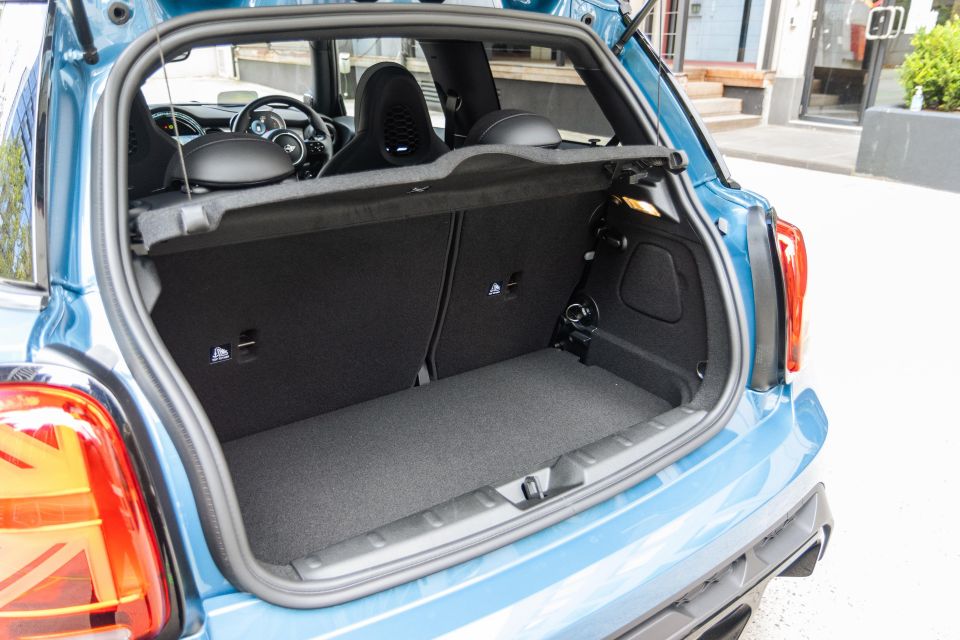
Not so cool is rear-seat space, or complete lack thereof.
Behind 6’1-ish me there’s literally no legroom even for a child. The only person that would fit behind me is a very young child in a booster seat – thankfully, there are ISOFIX anchor points in both rear positions.
Amenities include rear outboard armrests and a central cupholder, and that’s really about it. Remember this is a teeny tiny city car, think of it of more a 2+2 – if you need more space get a 5-Door Hatch or Clubman.
Boot space is likewise, tiny. Just 211L is quoted by Mini with the rear seats in place, expanding to 731L with them folded.
The rear seats fold in a 60:40 ratio despite there only being two back there, and there’s no spare tyre given this Mini rides on run-flat rubber.
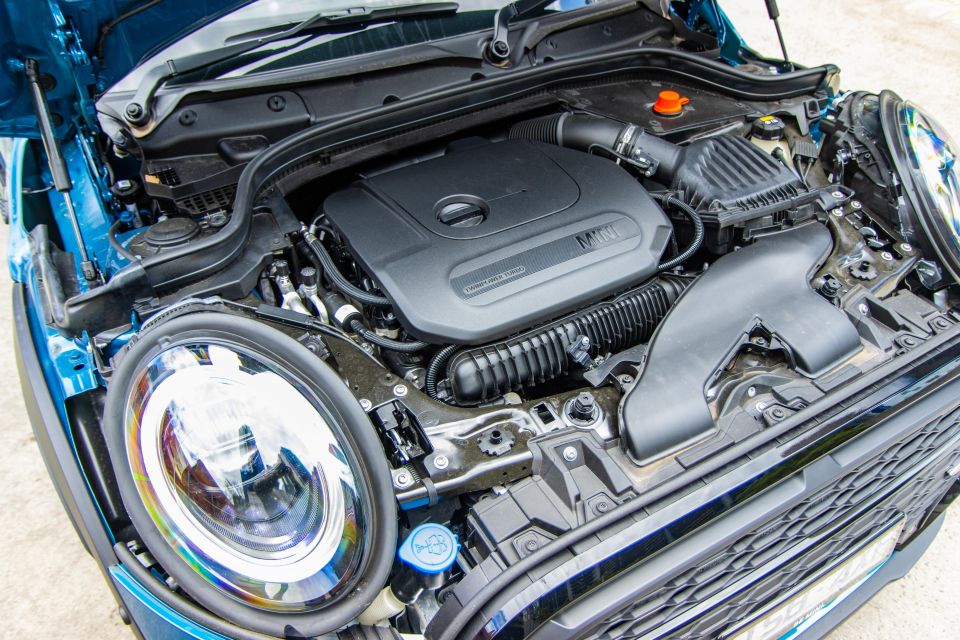
Cooper S models are powered by a 2.0-litre four-cylinder turbo petrol engine with outputs of 141kW (6000rpm) and 280Nm (1350-4600rpm).
Drive is sent exclusively to the front wheels, with both six-speed manual and seven-speed dual-clutch automatic transmissions available – it’s a no-cost option for either.
Mini claims the Cooper S 3-Door Hatch will dash from 0-100 in 6.7 seconds, and hit a top speed of 235km/h.
Fuel use, meanwhile, is rated at a fairly thrifty 5.8L/100km, aided by idle start/stop technology. The Mini’s 44L fuel tank drinks 95 RON premium unleaded at a minimum.
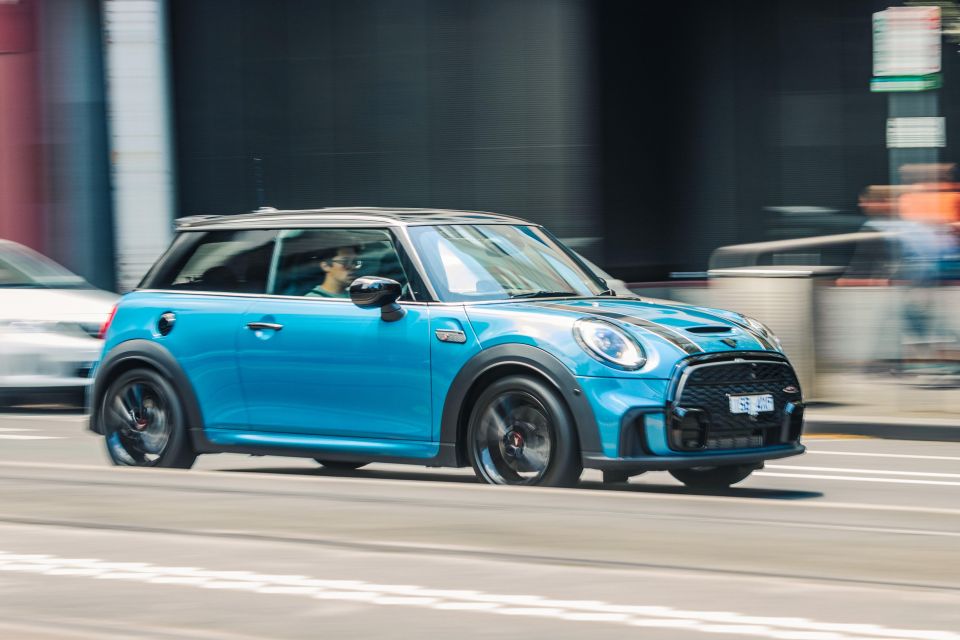
It may be getting on a bit, but the Mini Hatch still has that darty ‘go-kart’ feel the brand loves to shout about.
The smallest Mini is arguably the most true to its heritage, with tiny dimensions (relative to modern cars, of course), a light 1225kg kerb weight (in 3-Door Cooper S JCW Sport spec), and keen handling.
The steering is super responsive, and the Mini is keen to point its nose and turn in. There’s no limited-slip diff up front but there’s a bit of fun to be had testing the Cooper S’s limits in corners.
In Cooper S guise, there’s not the same raucous bark out the rear like the full-fat JCW, but the 2.0-litre turbo has a decent note to match its brisk performance. I just wish there was a little more drama on upshifts and overrun.

From low down there’s heaps of torque for such a small car, and the quick-shifting seven-speed DCT is one of the best of the breed whether it’s left in D or if you’re using the steering-mounted paddle shifters.
Where some Mini models can be too firm with sporty JCW add-ons, the adaptive dampers on the Cooper S JCW Sport means you can tailor the car to the conditions, and it’s perfectly liveable day-to-day as we found navigating inner-city Melbourne.
The Mini’s enthusiastic character makes it fun to dart around city streets too, meaning you don’t need to be going full speed on a winding B-road for it to put a smile on your face. There’s just some tangible charm to the way it drives.
Something I’ve complained about Mini products in the past, however, is on-road refinement – specifically insulation from road noise.

Where expert car reviews meet expert car buying – CarExpert gives you trusted advice, personalised service and real savings on your next new car.
It seems to be an issue common to all BMW products based on the UKL platform – think 1 Series, X1, X2, and the entire Mini range. There’s plenty of tyre roar present in the cabin over anything other than fresh, smooth bitumen.
Given these vehicles are engineered to sit happily on the Autobahn, it’s a shame BMW and Mini haven’t put a little more effort into open-road refinement. It’s otherwise quite a capable tourer for such a small vehicle.
Another complaint is the camera-based adaptive cruise control system, which can fumble at times due to weather conditions. We had it phantom brake a few times, which was a little frightening, and there was one instance where it just refused to turn on as it was facing direct sunlight.
The lack of a proper lane-keep assist system is another niggling omission that shows the Mini’s age and also puts it behind the likes of the updated Volkswagen Polo GTI and Audi A1 which offer essentially Level 2 autonomous driving.

Mini and its BMW parent continue with a three-year, unlimited-kilometre warranty instead of moving to a five-year, unlimited-kilometre plan like the wider market, and luxury rivals including Audi, Mercedes-Benz, and Lexus.
Mini offers Service Inclusive capped-price service plans which cover the first five years or 80,000 kilometres of scheduled servicing – whichever comes first.
The Basic plan costs $1640 for Cooper and Cooper S models ($1700 for JCW variants).
As for real-world fuel consumption, we saw an indicated average of 7.2L/100km over 500km during our week of testing, with plenty of highway driving thrown in. That’s still a little up on Mini’s official 5.8L/100km claim.
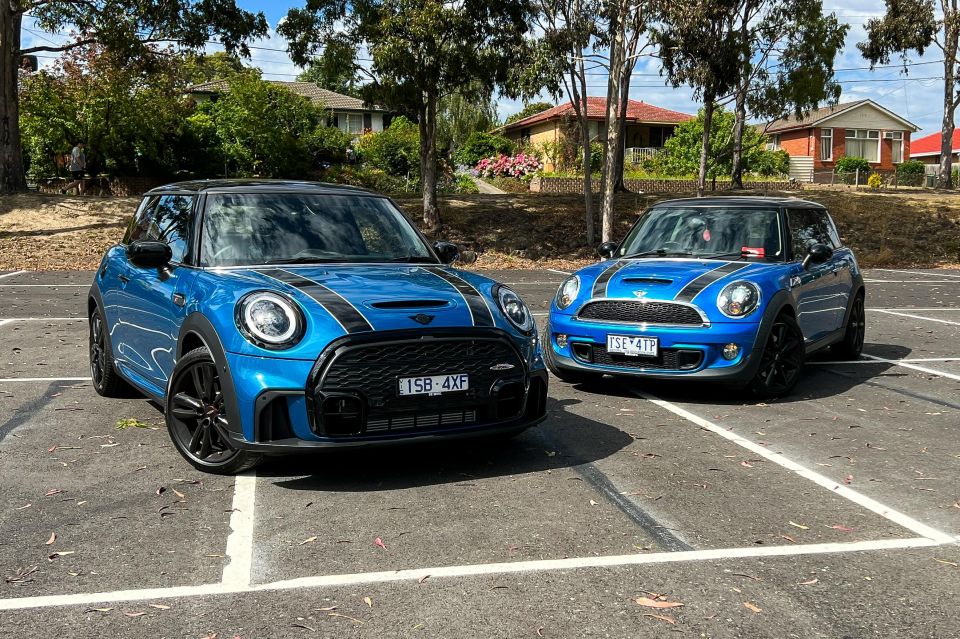
Buy your new car without the stress. It's fast, simple and completely free.

Great service from Travis and team, second time I have used this business would not hesitate to recommend them to anyone
Craig C.
Purchased a Ford Ranger in Sunshine Coast, QLD
CarExpert helped Craig save $7,224 on his Ford Ranger, now let us save you on your next new car.
Get your BEST priceI love a bit of a throwback, especially cars that acknowledge their lineage but have been brought into modern times.
Lining up my Island Blue test car alongside a similar blue previous-generation Mini Cooper S (picture above), it’s very clear that while it’s had to evolve with the times somewhat, the modern Mini is doing its best to stay true to its roots.
The Cooper S is fun, quick, and cute as a button. In keeping with the brand’s premium pitch, it also feels a cut above similarly sized mainstream vehicles when it comes to build quality and design.
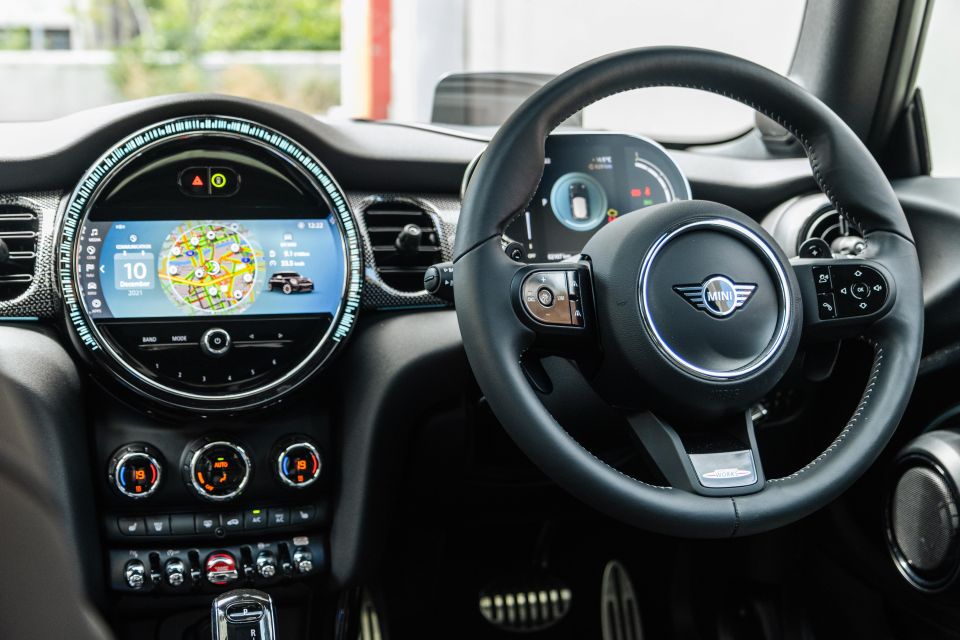
What’s not so great is the price and lack of some modern features you’d expect of a premium compact car, particularly at the JCW Sport’s price point. Further, that pretty average crash rating looms given just about every rival hatchback wears a five-star ANCAP or Euro NCAP safety rating.
For all its faults, it’s hard to not fall a little in love with the Mini. The iconic pint-sized 3-Door Hatch is arguably the most ‘mini’ Mini, and the Cooper S balances performance and engagement with everyday usability for city life.
My tip? Get the Cooper S Classic and pocket the $8000 unless you really want all the personalisation options and convenience features on offer.

Click the images for the full gallery
Where expert car reviews meet expert car buying – CarExpert gives you trusted advice, personalised service and real savings on your next new car.
James is an automotive journalist based in Melbourne, Australia. Before joining CarExpert.com.au in 2020, James has worked at leading auto media outlets including Carsales and CarAdvice, as well as at Pulse agency for Ford Australia's communications team. In 2019 James made Mumbrella's 'Top 20 most prolific web authors in Australia' list after publishing 1,360 articles between March 1, 2018 and February 28, 2019 for CarAdvice. James is also an Ambassador for Drive Against Depression – an Australian charity whose mission is to support mental wellness through the freedom of driving and a shared love of cars.


Max Davies
5 Days Ago


Neil Briscoe
4 Days Ago


Max Davies
3 Days Ago


James Wong
1 Day Ago


William Stopford
1 Day Ago
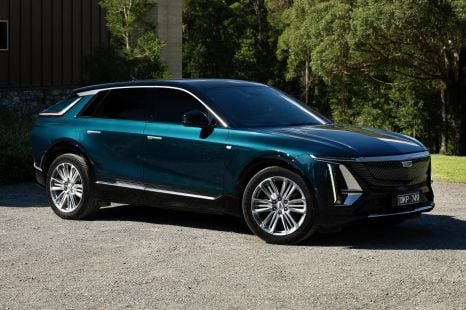

William Stopford
4 Hours Ago